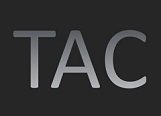Product Road Map Purpose and Techniques
A key attribute of a product manager is the ability to take an abstract idea from a company founder or CEO and turn it into a tangible product. You first need to visualize what the product will do, the steps to get there, who it serves, what the competitive landscape looks like, and how to sell it as it evolves from a concept to a serviceable working product. This is true whether the product is a electromechanical device or a soft product like a computer application. The tool you usually start with is the product road map.
As the name implies, the road map is not a one time or final design but a continuous narrative on how the product will be initially planned and how it will evolve. To penetrate a market and capture hearts and minds, you very likely will go out initially with less than a full featured product. The road amp will lay out your best guess at the sequence of additional features but as soon as the initial release is made to beta or production, customer feedback likely will cause that to change. Still, it is better to lay out the plan and adjust continuously than to fail to plan iterations in the first place. The road map will be a living plan.
"If you don't know where you are a road map won't help. If you don't know where you're going, Any road will do."
Assessing the market, the needs of the target customer and the competitive situation is important. Is this a breakthrough product or a me too? Does it fill a niche or will it capture market share from existing players? There's nothing wrong with being second to the party. Ask Microsoft. It is easier to follow sometimes and nimbly position yourself as filling the unmet needs of the pioneer. Assess your competitors strengths and weaknesses as best as you can. Learn from current objections to their offerings.
I prefer a visual road map for the first cut, something in PowerPoint. I may use a form to collect the raw data I need in any number of formats I gathered along the way. But I almost always create and maintain a deck that can be used to communicate the road map and pulled apart for other uses such as investor pitches and sales training.
The time horizon should be far enough out to exhaust all that is currently known about the product and your team's capacity to execute it. I like to have 3-5 years on the timeline. Only major events are shown, a 50,000 foot Gantt Chart.
Key Process Indicators or Metrics should be identified early in the planning process. Depending on what they are and what type of product it is, the collection of the raw data for these may be built into the product. It's usually easier to plan them in than add them later. These KPI's will form the basis for continuous improvement and the achievement of milestones for the product.
Pricing is tricky and for new products in new markets more difficult to nail down. For other products it's easier and a function of the competitive situation. I recently purchased a stand up desk and saw two tight groupings of prices based on the features. At the low end all the products were within $10 of each other. I've been in pricing meetings where the group exercise dragged on for hours and was basically part debate and part polling. The CEO eventually just picked a number. That's often the process too.
As I say, I've written many of these and have kept a good library of examples. The important thing is to get started early and keep it up to date. Keep old versions for reference. Sometimes you need to see where you were to know where you're going.





